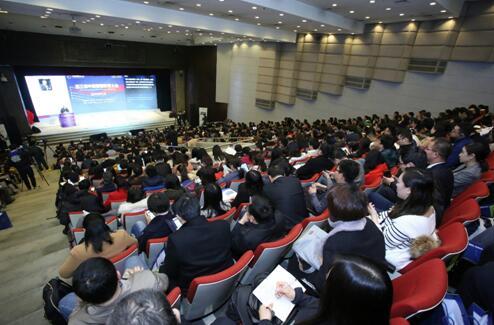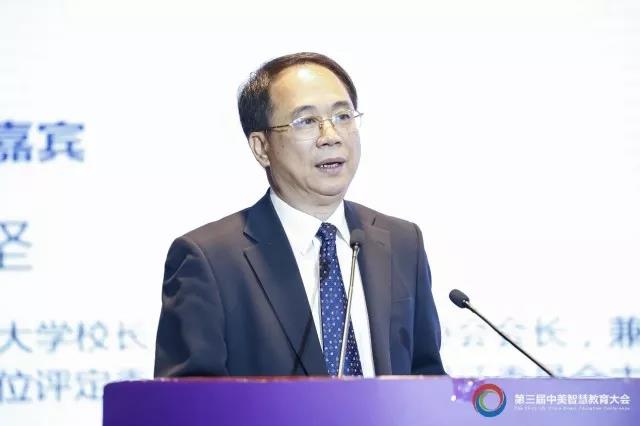 From 18-20 March, 2018, the 3rd US-China Smart Education Conference was held in Beijing.
From 18-20 March, 2018, the 3rd US-China Smart Education Conference was held in Beijing.
More than 800 people, including education officials, experts, teachers and students from universities and colleges, and business representatives from China and the United States, attended the conference and shared their ideas and research results in the area of high-tech enhancements to education. Pan Yunhe and Zhao Qinping of the Chinese Academy of Engineering, Lei Chaozi, director of the Science and Technology Department of the Ministry of Education (MOE), Dong Qi, President of Beijing Normal University, Zhong Binglin, Chairman of the China Education Society, Eugene G. Kowch, president of the Association for Educational Communications & Technology, and other education and technology experts from China and the United States participated in the conference and conducted in-depth discussions on artificial intelligence and the informatisation of education.

Members of the National Natural Science Foundation of China, the National Science Foundation of the United States, and the Humanities and Cultural Exchange Centre for China and Foreign Countries of the MOE were also invited to the conference, and gave wonderful presentations on artificial intelligence, smart education, the integration of production and education, and educational exchange and cooperation between China and the United States. Yang Zhijian, the president of the Open University of China (OUC), was also invited to give a presentation entitled A Call from the Future: New Opportunities for Educational Informatisation.

Yang Zhijian said that recent scientific and technological progress has been inspiring, and that the future is even more hopeful, and should provide new opportunities for the development of education. He also pointed out that, with the rapid development and wide application of information technology, achieving informatisation in education and leading its modernisation has become a mission. China's education informatisation has now reached its 2nd stage. We should expand the reach of high-quality educational resources by means of informatisation, gradually reduce the digital gaps among regions and between urban and rural areas, and vigorously promote equality of educational opportunity. We should build a network-based, digitised, individualised and lifelong education system, and construct a society in which everyone can learn, anywhere and at any time. The construction of digital learning environments, resources and models – in short, the deep integration of information technology and education - should be vigorously promoted.
Yang Zhijian presented the practical experience the OUC has had promoting the integration of information technology and education. In order to provide high quality education to areas with poor resources, the OUC has built a total of 314 cloud classrooms and 21 control centres in western regions, including Xinjiang, Tibet, Qinghai and Gansu, covering 22 OUC branches connected to the OUC headquarters, branches, local colleges and learning centres . In order to pull together high-quality curriculum resources and make learning convenient by relying on the National Digital Learning Resource Centre and the more than 250 smaller centres throughout the country, has built five-minute courses and digital-learning resources of various types for 30,000 subjects. In addition, a number of websites, such as www.legalinfo.gov.cn, www.cunguan-edu.cn, and dianxi.nerc-edu.com, have been built, and are available for free. In order to provide quality network-based education, the “Six-Network Integration” learner-development model has been explored.
During the conference, a variety of other forums were held: Enterprise Strategic Development in the Information Age, Integration of Production and Education via New Technology, Artificial Intelligence and Education, and Sino-American Information Technology Cooperation. A report entitled 2018 China Vocational Education Technology Outlook: Horizon Report was also released at the conference.
The conference was jointly sponsored by Beijing Normal University, the University of North Texas (USA), and the National Engineering Laboratory for Cyberlearning and Intelligent Technology. It was organised by the Smart Learning Institute at Beijing Normal University, the Chinese Academy of Education and Social Development, and the Association for Educational Communications & Technology.
By Wu Yaqi and Jin Hongyu ,OUC